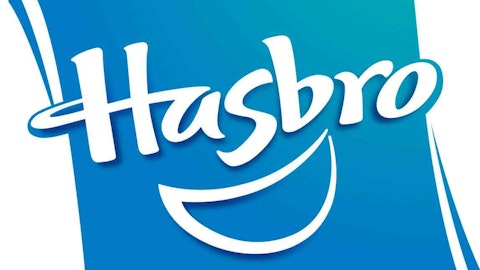Netflix, Inc. (NASDAQ:NFLX) has done very well in 2013 so far; the company has been one of the top gainers in the S&P 500. The company’s rock-solid performance has led to more neutral views, but Netflix still has room to outperform even more. However, before buying into the Netflix, Inc. (NASDAQ:NFLX) story, the possible downsides should be evaluated carefully. Investors should be well aware of the dark sides of an investment in spite of the low probabilities attached to each of the factors below.
1. Licensing deals: As Netflix is becoming a bigger force in the industry it is directly/indirectly competing with the services of a number of content owners. Netflix acquires a lot of content from Time Warner Inc (NYSE:TWX)‘s subsidiary, Warner Bros. and the company competes at least indirectly with Time Warner Inc (NYSE:TWX)’s business unit, HBO. As a result, Warner Bros. might be more reluctant to sign deals with Netflix, Inc. (NASDAQ:NFLX), or ask for higher prices in content license negotiations to serve the interests of HBO.
Also, Netflix signed a big multi-year deal with The Walt Disney Company (NYSE:DIS) for providing a number of first run shows to Netflix users. And The Walt Disney Company (NYSE:DIS) owns a third of Hulu, which is one of the biggest competitors of Netflix in the subscription video on demand (SVOD) space. Netflix’s ability to strike deals with content owners to expand its streaming catalog might be affected due to such conflicts of interest in the entertainment industry.

The company has refinanced and added more debt for general corporate purposes, but if the original shows cross their budgets significantly, the company might be forced to take on more debt. And if the debt issued in the future is convertible, equity investors face dilution risk, in addition to incremental credit risk.
3. Rising prices of content: Along with the rising prices of catalog content from studios and content owners, Netflix, Inc. (NASDAQ:NFLX)’s leading competitors are bidding heavily for content licensing deals. Amazon is known for making big investments to capture market share from competitors. And Hulu got fresh cash injection of more than $750 million from The Walt Disney Company (NYSE:DIS), Fox and NBC to add more content. As a result, the presence of Hulu and Amazon in the table will drive the price of content upwards.
4. Competition is surging: In addition to existing subscription video-on-demand players, newer ones are popping up. Outerwall Inc (NASDAQ:OUTR) and Verizon’s joint venture, Redbox Instant brings added competition to the Internet streaming business. Redbox is increasingly a very dominant automated DVD retailer with more than 47% market share, and can lure customers who like physical discs to get subscriptions for Redbox Instant.
Amazon doesn’t disclose subscriber numbers for Prime but it is widely expected to be in the 8-10 million region, and Hulu Plus surpassed the 4 million subscriber mark. Time Warner Inc (NYSE:TWX)’s HBO has more than 28.77 million subscribers in the U.S., and many of them use the HBO Go app. The increased number of competitors in the Internet streaming business, along with large consumer platforms like Apple Inc. (NASDAQ:AAPL) and sites like YouTube can gain market share through user defection from Netflix, Inc. (NASDAQ:NFLX)’s user base.




